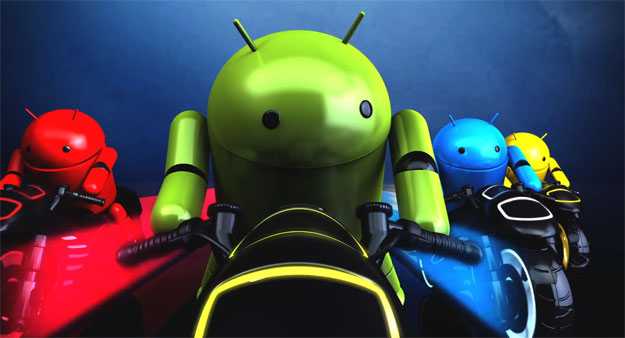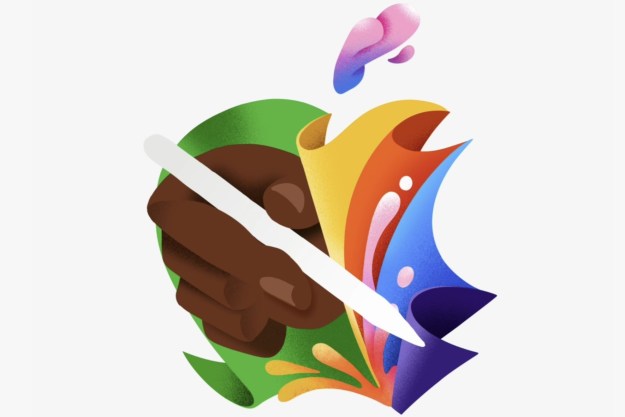
At 10pm last night, Google and Samsung unveiled the Galaxy Nexus, the first smartphone to run Android 4.0 (Ice Cream Sandwich). We’ve been hearing about the new operating system since it was announced at Google’s I/O conference some months ago as the OS that would unify Android smartphones with Android 3.0 Honeycomb, which has only run on tablets so far. Like every major version of Android before it, Ice Cream Sandwich will debut on a piece of hardware co-designed and co-branded by Google. The first Android 4.0 device will be called the Galaxy Nexus (Read about it here) and will be coming out this November, though we don’t yet know what day, for what price, or on which carriers it will arrive.
Below are all of the new features of Android 4.0 (Ice Cream Sandwich) that we know about.
New features

While Google cherry picked many of the best features from other operating systems to develop Android, its engineers dreamed up quite a few original ideas in Android 4.0 too. Here are a few of them.
- Quick response texts: People often call at a bad time, but with this feature, you can write some pre-canned messages and as soon as someone calls, instead of answering or denying the call, you can choose to text them a busy message instead.
- In-line spell checking: It was wonderful when browsers started correcting text and now your phone will start doing it too.
- Complete data network control: If you care to, you can now monitor exactly what apps are using data, when they are using data, and shut them off accordingly. Google’s controls are so refined that you could search back a few hours or days to find an app that drained your battery or used a ton of data, identify it, and then shut off its ability to transmit background data.
- Instant voice-to-text: Apple may have Siri, but Android has had voice recognition for a while. Google has improved this functionality by letting you dictate a text without waiting for the voice dialog to come up.
- Explore-by-touch mode: Sounds play as you move your fingers across the screen. This is for blind users.
- Photo and video editing: Androids Camera and Gallery apps now have a built in photo editor. You can also add “Live Effects” to video–things like weird face contortions, beams of sunlight, etc.
- Better Camera app: The Camera app also has a very cool panorama mode that makes it easy to stitch together a big picture as well as take stop-motion photography. You can also finally tap to focus on something.
- Screenshots: By holding a couple buttons, you can snap a screenshot of your phone.
Really cool new features

Believe it or not, there are some innovative new features coming to Ice Cream Sandwich as well. Here are three of them.
- Android Beam: Since all Ice Cream Sandwich phones have NFC, if you tap the backs of two of them together, you can instantly share whatever you’re doing with another Android handset. If you’re playing a game, your friend’s Android will open up the Android Market to the page where they can download the game. If you’re on a Web page, their phone will open up that same page. It’s fast and easy looking. Now all we need is an army of phones with Android 4.0 and NFC.
- Face unlock: Instead of the standard lock screen, now Android will supposedly (the demo didn’t work in the presentation) be able to recognize your face and unlock your phone for you. We’re hesitant about this feature, but if it works as advertised, it could be very cool.
- Unified phone and tablet apps: Supposedly, Android 4.0 will be able to hot swap between tablet and phone orientations, making things like Motorola’s Lapdock sound much more appealing. It also is the first platform that will allow a single app to be written for both tablets and phones. This may not make much of a difference now, but down the line it could mean broader support for Android. Both Apple and Microsoft require separate apps from developers for phones and tablets.
Features borrowed from Android Honeycomb

In addition to looking a lot more like Windows Phone, Google has brought many of the features from Android 3.0 (Honeycomb) from the tablet to the phone. This is good, considering Ice Cream Sandwich is supposed to work equally well on a tablet or phone.
- Unlock screen: The unlock screen has you drag a circle to the edge of another circle, though Google has enhanced its functionality, allowing you to open up the camera or notification tray from the unlock screen.
- Resizable widgets: Widgets can now be resized and can scroll, among other things. Very cool.
- On-screen navigation buttons: Android phones have always had four separate buttons (sometimes haptic, sometimes actual buttons) for Home, Search, Back, and Menu functions. Well, not anymore. Like Android tablets, all of the navigation has been moved onscreen. There are now three navigation controls: Back, Home, and Recent Apps. The Search and Menu buttons have been removed entirely, though they’ll show up if an app requires them. Apps now have a menu tray that appears and changes as needed.
- Recent Apps: By clicking on this new navigation button, you can bring up a list of recently used applications and exit them, enter them, or do whatever you like.
- Redesigned app drawer: The new app drawer has a tab for browsing widgets and now scrolls through apps side-to-side in a page format instead of a downward scroll, like in previous versions.
- Improved copy and paste: Copy and paste now has little bars to help select text and an easier menu to do with it what you wish.
- Tabbed Web browsing & shared bookmarks: Google isn’t calling the new Android browser “Chrome” but it’s starting to communicate and look more like Google’s notable desktop browser. The new browser lets you scroll through tabs (swipe them to delete), save pages for offline reading, request a desktop version of a mobile Website, and share bookmarks with your PC.
- Enhanced email: Google has reworked the Gmail app to show more messages and support nested mail subfolders, etc.
- Improved notifications: Music can now be paused or fast forwarded in the notification tray and app makers will have greater control over the notifications that are sent out.
Features borrowed from Windows Phone, webOS, and iOS
This isn’t a bad thing, but it should be acknowledged. Microsoft’s Windows Phone platform may be struggling to compete, but those who use it, love it. In its presentation last night, Google acknowledged that “people don’t love Android.” It was a startling admission, but helps to explain why Google’s new approach is much cleaner and looks a lot more like Windows Phone.

Below are new traits of Android:
- Roboto font: For the first time, maybe ever, Google went into detail on its new font named Roboto. The font does look very nice on small screen, but we have to say, it looks a lot like the Windows Phone font with thin lines and no serif.
- Solid backgrounds and 1-color icons: Android 4.0 is full of white, black, and very simple, one-color icons and backgrounds. This is an attempt by Google to unclutter the OS, but it’s also unmistakably borrowed from Windows Phone, which is full of solid colors.
- Grids and big pictures: Borrowing from the old Zune interface, WP7 has always had large-full screen pictures. Android 4.0 borrows this idea for its new phone app. In addition, Google has redesigned the Gallery app and a number of other sections of Android to have a gridded interface, with big pictures…a staple of WP7.
- Swiping and gestures: Finally, we’re happy that Google is finally adopting more swipes and gestures, but it’s very clear that many of these gestures are pulled from Windows Phone and webOS. Previous versions of Android were full of touches and taps, making for a very static experience. Now you can swipe away notifications or running apps with a flick of the finger.
- Home tray: This idea doesn’t come from WP7, but it is borrowed from iOS. Google has finally integrated a home tray into Android. You can move any app shortcuts into this area, which will make them show up no matter which homescreen you’re on.
- Homescreen folders: By holding one app icon over another, you can easily create a folder of icons on the homescreen. This has been in modded versions of Android for some time, so it’s good to see Google integrating the feature.
- Keyboard: The new on-screen Android keyboard looks almost identical to Windows Phone. This is good, since WP7 has the best keyboard, by far.
- People App: Google has renamed the contacts page as a “People” page with an entry for “Me.” You can browse through updated profiles and see your friends recent social networking updates, among other things. This is borrowed directly from WP7, though we like how Android brings together entries from a myriad of different services — more than iOS and WP7.
- Visual voicemail integration: Voicemail sucks. It’s slow to listen to and difficult to navigate. Android 4.0 integrates visual voicemail directly into the OS, allowing you to see the picture of who left a message, and then fast forward, rewind, and delete the messages as you see fit.
How do you get it?
This is the big question. We think Android 4.0 is definitely a worthwhile update that changes a number of things about Android, but getting it may be a difficult task. We don’t know when Google will release the code for it so that all phone manufacturers can begin adopting it, but because of its lack of navigation buttons and what sounds like requirements for NFC and a 1280 x 720 pixel resolution, no other phones on the market may be able to run it currently. The only phone that might have Ice Cream Sandwich this holiday season is the Galaxy Nexus, and we don’t know when it will be available (they say November), which carriers it will be available on (Verizon is rumored), or what it will cost. It’s all up in the air right now, but we’re hoping U.S. carriers embrace this new phone.


